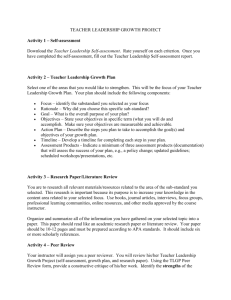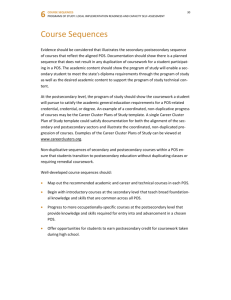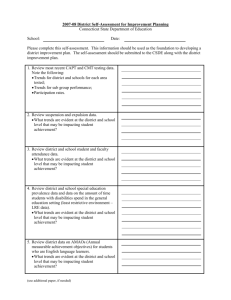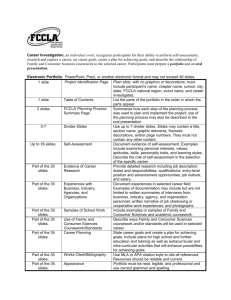Teaching and Learning Strategies
advertisement
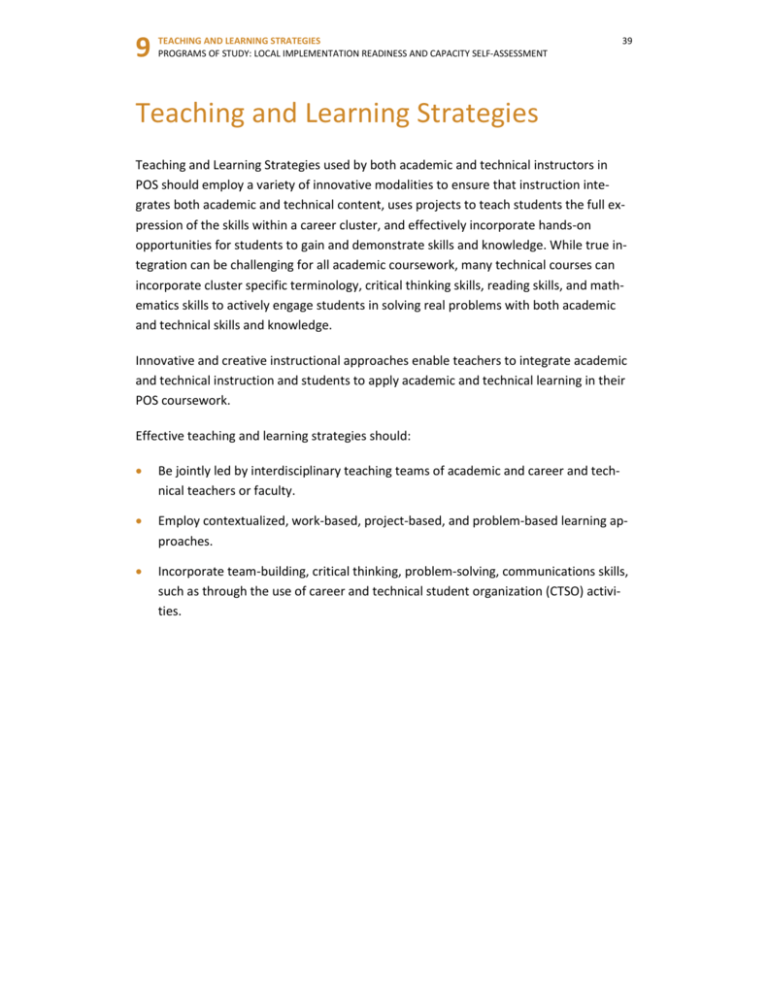
9 TEACHING AND LEARNING STRATEGIES PROGRAMS OF STUDY: LOCAL IMPLEMENTATION READINESS AND CAPACITY SELF-ASSESSMENT 39 Teaching and Learning Strategies Teaching and Learning Strategies used by both academic and technical instructors in POS should employ a variety of innovative modalities to ensure that instruction integrates both academic and technical content, uses projects to teach students the full expression of the skills within a career cluster, and effectively incorporate hands-on opportunities for students to gain and demonstrate skills and knowledge. While true integration can be challenging for all academic coursework, many technical courses can incorporate cluster specific terminology, critical thinking skills, reading skills, and mathematics skills to actively engage students in solving real problems with both academic and technical skills and knowledge. Innovative and creative instructional approaches enable teachers to integrate academic and technical instruction and students to apply academic and technical learning in their POS coursework. Effective teaching and learning strategies should: Be jointly led by interdisciplinary teaching teams of academic and career and technical teachers or faculty. Employ contextualized, work-based, project-based, and problem-based learning approaches. Incorporate team-building, critical thinking, problem-solving, communications skills, such as through the use of career and technical student organization (CTSO) activities. 9 Self-Assessment Ranking of Current Implementation Status and Importance to Your Implementation Rank your development and implementation progress for Teaching and Learning Strategies according to the measurement listed. Determine the level that most closely aligns with the progress made toward implementation of Teaching and Learning Strategies. Record your self-assessment rating using the following determinations. The self-assessment is intended to be an authentic gauge of actual implementation. Results from the self-assessment can be used to target areas for technical assistance and professional development. An analysis of the level of importance can assist in establishing the priority and a possible timeline for implementing technical assistance and scheduling professional development. Implementation Characteristics Current Status Importance Students receive academic and technical instruction in integrated, non-sequential ways. None In Progress Operational Low Important Critical Instructors use problem-solving and project-based instruction to teach integrated coursework. Students have opportunities to delve deeply into material and create solutions and projects that reflect their gained skills and knowledge, while working as a team. None In Progress Operational Low Important Critical POS coursework is created by a team of academic and technical secondary and postsecondary instructors. Coursework is challenging and meets the standards of academic requirements at the state level. None In Progress Operational Low Important Critical Instructors are supported to design integrated coursework by administrative staff and with appropriate resources. None In Progress Operational Low Important Critical Overall Status Summary Current Status Importance After considering each of the implementation characteristics, please rank: 1) your current status of POS Teaching and Learning Strategies implementation; and 2) the level of importance this element has to your POS implementation. Transfer these rankings to the Self-Assessment Summary to compare the status and importance of this element to the other POS framework elements. None Low In Progress Important Operational Critical TEACHING AND LEARNING STRATEGIES PROGRAMS OF STUDY: LOCAL IMPLEMENTATION READINESS AND CAPACITY SELF-ASSESSMENT Teaching and Learning Strategies 40 In the section below, identify your current capacity assets in the area of Teaching and Learning Strategies by responding to the question prompts. Give equal analysis to local capacity barriers, items of critical importance, and steps needed to remedy these capacity concerns. State or Local Self-Assessment Items of Critical Importance/Action Steps What’s working well that is worth keeping? What goals do you have to sustain and enhance the level of collaboration among the partners? What strategies will you use to sustain the engagement of partnership members? How will you know if your partnership is being successful? Notes What will be new or needs to be revised? What strategies will you use to address items identified as being of critical importance? What are the indicators you will use to measure your improvement? How will you know if you are successful? And when? Notes TEACHING AND LEARNING STRATEGIES PROGRAMS OF STUDY: LOCAL IMPLEMENTATION READINESS AND CAPACITY SELF-ASSESSMENT Self-Assessment Reflection and Action Planning 9 Teaching and Learning Strategies—Implementation Capacity Analysis 41

